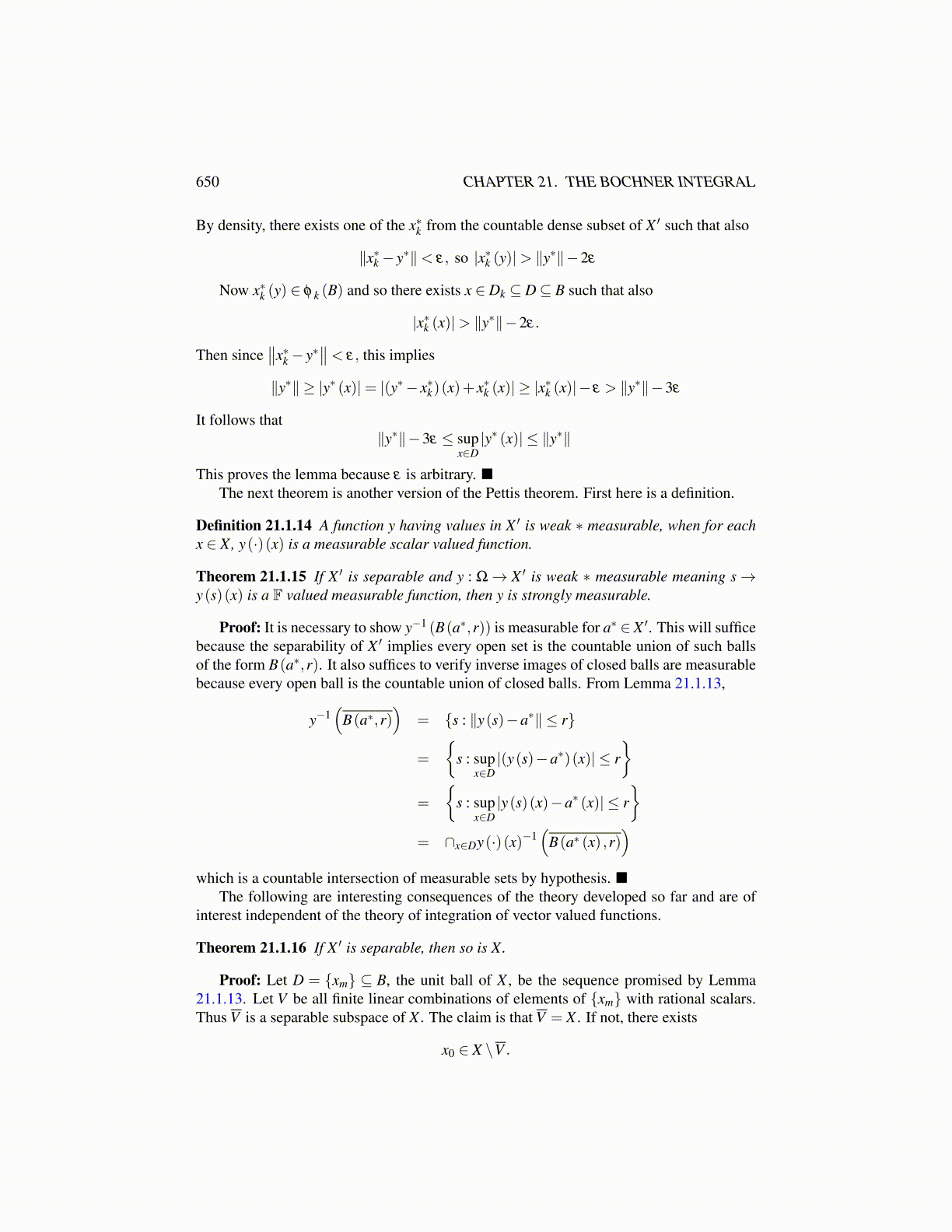
650 CHAPTER 21. THE BOCHNER INTEGRAL
By density, there exists one of the x∗k from the countable dense subset of X ′ such that also
∥x∗k − y∗∥< ε, so |x∗k (y)|> ∥y∗∥−2ε
Now x∗k (y) ∈ φ k (B) and so there exists x ∈ Dk ⊆ D⊆ B such that also
|x∗k (x)|> ∥y∗∥−2ε.
Then since∥∥x∗k − y∗
∥∥< ε, this implies
∥y∗∥ ≥ |y∗ (x)|= |(y∗− x∗k)(x)+ x∗k (x)| ≥ |x∗k (x)|− ε > ∥y∗∥−3ε
It follows that∥y∗∥−3ε ≤ sup
x∈D|y∗ (x)| ≤ ∥y∗∥
This proves the lemma because ε is arbitrary.The next theorem is another version of the Pettis theorem. First here is a definition.
Definition 21.1.14 A function y having values in X ′ is weak ∗ measurable, when for eachx ∈ X, y(·)(x) is a measurable scalar valued function.
Theorem 21.1.15 If X ′ is separable and y : Ω→ X ′ is weak ∗ measurable meaning s→y(s)(x) is a F valued measurable function, then y is strongly measurable.
Proof: It is necessary to show y−1 (B(a∗,r)) is measurable for a∗ ∈ X ′. This will sufficebecause the separability of X ′ implies every open set is the countable union of such ballsof the form B(a∗,r). It also suffices to verify inverse images of closed balls are measurablebecause every open ball is the countable union of closed balls. From Lemma 21.1.13,
y−1(
B(a∗,r))
= {s : ∥y(s)−a∗∥ ≤ r}
=
{s : sup
x∈D|(y(s)−a∗)(x)| ≤ r
}=
{s : sup
x∈D|y(s)(x)−a∗ (x)| ≤ r
}= ∩x∈Dy(·)(x)−1
(B(a∗ (x) ,r)
)which is a countable intersection of measurable sets by hypothesis.
The following are interesting consequences of the theory developed so far and are ofinterest independent of the theory of integration of vector valued functions.
Theorem 21.1.16 If X ′ is separable, then so is X.
Proof: Let D = {xm} ⊆ B, the unit ball of X , be the sequence promised by Lemma21.1.13. Let V be all finite linear combinations of elements of {xm} with rational scalars.Thus V is a separable subspace of X . The claim is that V = X . If not, there exists
x0 ∈ X \V .